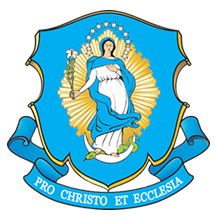
St. Anthony of Padua with Christ Child, Antonio de Pereda (1611-78); public domain.
By Kimberly Bruce
Saint Anthony, Saint Anthony
Please come around
Something is lost
And cannot be found.
Without a doubt, St. Anthony of Padua is one of the world’s most beloved and popular saints. Known for finding lost articles, awe-inspiring miracles, and his love for the poor, his feast is celebrated on June 13.
Hosts of miracles have been attributed to St. Anthony’s intercession. The one that started prayers to him for lost articles? Saint Anthony had a book of psalms that he loved. He used it for teaching, and it contained his personal notes and comments. A novice, who decided to leave their religious community, stole St. Anthony’s book. Saint Anthony prayed for it to be found. The novice was not only moved to return St. Anthony’s book to him, but he returned to the community as well.
Holy mule
Another of St. Anthony’s most famous miracles involved a mule and the Holy Eucharist. A man, named Bononillo, did not believe in Christ’s Real Presence in the Eucharist. Worse, he mocked those who did.
Saint Anthony asked Bononillo, “If the mule you ride adored the Body of Christ in the Eucharist, would you believe in the truth of the Blessed Sacrament?” Bononillo not only agreed but even said he would starve his mule for three days beforehand.
The challenge was set. Saint Anthony, too, fasted for three days. After three days were over, hay was set before the mule’s nose in the town square. Some distance away stood St. Anthony holding the Blessed Sacrament. The mule never touched the hay but walked to where St. Anthony stood, bent its front legs, and knelt in adoration before the Holy Eucharist! Bononillo knelt, too, in profession of his newfound belief in the Blessed Sacrament.
Portuguese, not Italian
Saint Anthony was born, not in Padua, Italy, but in Lisbon, Portugal in 1195 and was the son of a captain in the royal army. At the age of 15, Anthony chose to join the order of St. Augustine. At 17, he was sent to a monastery in the town of Coimbra where he studied for nine years and where he is believed to have been ordained to the priesthood.
In 1219, local Franciscans, including the future St. Berard of Carbio, travelled as missionaries to Morocco. There, they were brutally martyred for preaching about Jesus Christ. When St. Anthony heard about their martyrdom, he begged his superiors to let him join the newly-formed Franciscan Order so that he, too, could go to Morocco to suffer the same fate of martyrdom.
His request was ultimately granted. Upon reaching Africa, however, St. Anthony came down with such a horrible illness that he had to board a ship back to his homeland. A storm at sea drove the ship, though, to the coast of Sicily. The local Franciscans sent St. Anthony to Assisi where he was given menial tasks and asked to serve as a chaplain. He never mentioned his level of education to his newfound companions.
Friend of St. Francis
Saint Anthony was blessedly content with his new life of seclusion and contemplation. Nine months later in the year 1222, however, his life was to be forever changed. He was ordered to preach at a priestly ordination because the presider had fallen ill. Not long into his sermon, St. Anthony began to speak with such authority, fire, and holiness that all were amazed. Saint Francis heard of St. Anthony’s speaking prowess and assigned him to preach in northern Italy.
Amongst the poor of Italy and in southern France, St. Anthony realized he had to show the gospel in action by identifying with people in their needs. He chose to preach in cities where heresy was the strongest. He preached conversion and reconciliation with the merciful God. Once, while staying in the home of a man, the man came upon St. Anthony bathed in heavenly light holding the Child Jesus in his arms! (This is the reason St. Anthony is often depicted holding the Christ Child.)
Saint Francis then assigned St. Anthony to teach in a friary in Bologna, and in 1226 St. Anthony was promoted to provincial superior of all northern Italy, with residence in Padua.
Popular preacher
Crowds that came to hear St. Anthony preach were as large as 30,000 people. He had to keep a bodyguard to prevent individuals from cutting up his robe to possess as relics. He listened to confessions and fasted often entire days. He loved peacemaking and justice. He also authored an exceptional Biblical concordance along with many sermons.
In 1231, knowing he was quite unwell and suffering with extreme exhaustion, St. Anthony set out to return to his beloved Padua. He never made it, however. On June 13 he stopped in the town of Arcella and passed away at just 36 years of age.
Just one year later, he was canonized a saint by Pope Gregory IX who referred to St. Anthony as the “Ark of the Testament.” Also nicknamed the “Repository of Holy Scripture,” and the “Hammer of Heretics,” Saint Anthony was declared a Doctor of the Universal Church in 1946 by Pope Pius XII.
Saint Anthony of Padua, Doctor of the Church, pray for us!
{shopmercy-ad}
















